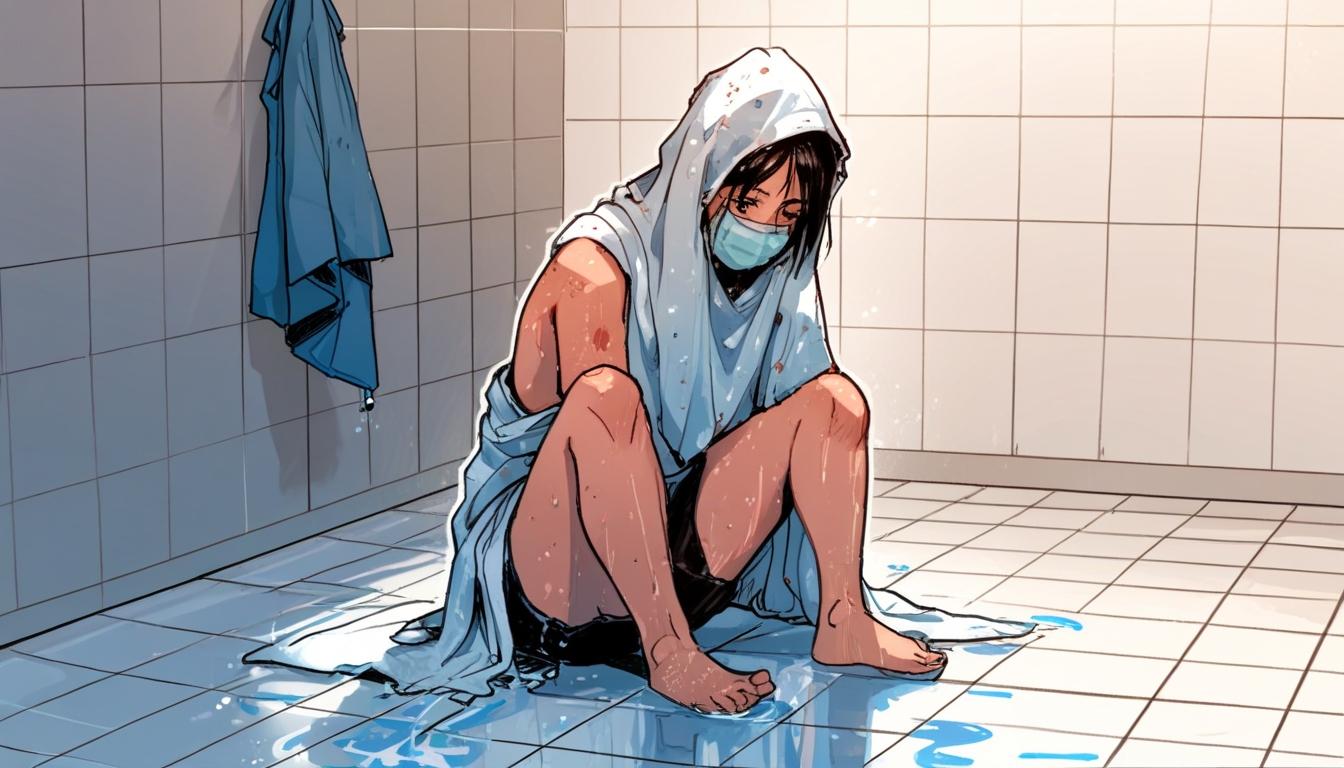A troubling social media trend has surfaced on TikTok, involving users simulating the controversial and distressing practice of waterboarding on themselves. The trend has sparked alarm among viewers for its dangerous and potentially harmful nature.
Waterboarding is a technique often associated with torture, historically used by the CIA during interrogations following the 9/11 attacks. The method induces a sensation akin to drowning by pouring water over a cloth-covered face, causing panic and extreme distress. The modern challenge seen on TikTok emulates this by having participants drape a towel or hood over their faces while sitting in a bath or shower, then pouring buckets of cold water over their heads.
One TikTok user, known as Teekay, posted a video of himself wrapped in a grey towel while seated on a shower floor, pouring water from a plastic bowl over his head. After the water soaked him, he ripped the towel away, gagged, and stated to the camera, “man nearly died,” laughing in shock. Another user, @elandz, shared his own attempt at the trend, donning an orange swimming cap and red trunks, covering his face with a light grey pillowcase used as a hood, and pouring water over himself in a bath. Following the experience, he repeatedly said, “That’s not calm,” clearly distressed by the sensation. His video has amassed over 2 million views and generated widespread expressions of concern and outrage in the comments.
Many viewers condemned the challenge online, questioning why individuals were voluntarily subjecting themselves to a practice recognized as torture. Comments included, “Why are we waterboarding ourselves?” and “These are the trends our parents talk about.” Others highlighted the psychological impact the real torture has had on survivors, with remarks like, “People are only just wondering why it is a torturing method,” and “Guys there are real life people living with PTSD and you're just joking like it’s nothing.”
The trend has crossed international borders, with participants in both the UK and the United States posting videos. A US user, going by @BruhGuy, tried the challenge multiple times, initially dismissing it as harmless. However, after several attempts, he visibly struggled, gagging and spluttering before ending the recording abruptly. Another UK-based user shared a video of a friend attempting waterboarding over a video call, showing similar distress.
Historically, waterboarding has a long record of use, stretching back to the 1500s during the Spanish Inquisition, employed by Dutch traders in the 18th century, and by the Japanese Army in World War II. The practice was outlawed under the 1949 Geneva Conventions, which explicitly forbade torture and inhumane treatment of prisoners of war and civilians.
Despite this, in the aftermath of the 9/11 attacks, the US Department of Justice, under President George W. Bush’s administration, authorised the CIA to use waterboarding on terror suspects, asserting that it did not constitute torture. This technique was reportedly used repeatedly in 2003 on three captured members of the terrorist group al-Qaeda. When the CIA publicly confirmed the use of waterboarding in 2005, officials defended it as legal and necessary to gather critical intelligence about future attacks.
The Daily Mail is reporting that while the trend is gaining traction, many are questioning its safety and the implications of trivialising a historically condemned practice. The videos have provoked a wide spectrum of responses, highlighting the ongoing tension between social media trends and awareness of their broader historical and ethical contexts.
Source: Noah Wire Services
